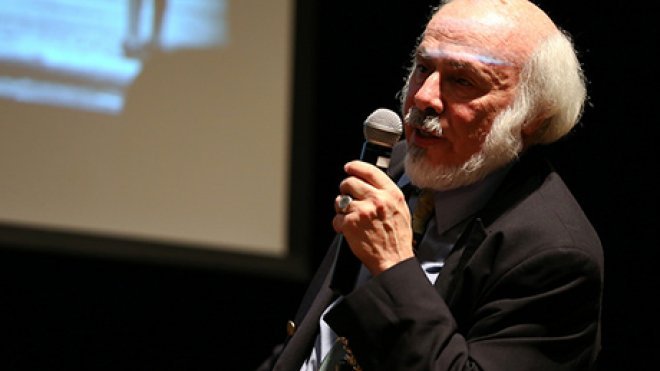Race in America, Then and Now: Reflections on the Impact of the Selma-to-Montgomery March
‘Freedom Journey’ exhibit and panel discussion examine the legacy of the historic 1965 events

PROVIDENCE, R.I. – Through the lens of an extraordinary exhibition documenting the historic Selma-to-Montgomery civil rights march in Alabama in 1965, the photographer and a fellow march participant joined a longtime social justice activist on Wednesday evening for a wide-ranging conversation on the history of the fight for equal voting rights, the impact of the continued lack of diversity in present-day positions of authority, and much more.
Freedom Journey 1965: Photographs of the Selma-to-Montgomery March launched its national tour in Rhode Island in November through a collaboration between Roger Williams University and Providence Public Library. On exhibit at the Library through February 28, the striking images included in the New-York Historical Society exhibition were captured by photographer Stephen Somerstein, a college student in 1965 who traveled to Alabama to document the march for his college newspaper.
On Wednesday, Dec. 9, Somerstein joined panelists Clifford Montiero, former president of Providence NAACP and a participant in the Selma-to-Montgomery march, and RWU Multifaith Chaplain the Rev. Nancy Hamlin Soukup for a presentation and discussion at the Library; Providence Journal columnist Edward Fitzpatrick served as moderator.
The Freedom Journey exhibition and panel discussion coincide with the commemoration of two landmark events – this year’s 50th anniversary of the march from Selma as well as the 150th anniversary of the 13th Amendment, which abolished slavery on Dec. 6, 1865. The exhibition marks the culmination of 150 Years Later: The 13th Amendment and Race in America, the University’s yearlong series to celebrate the monumental legislation and to reflect on the current state of race relations in America.
Kicking off the evening’s conversation, Somerstein narrated a slideshow on the people and sights he captured along the route. He noted the “cheerful” feeling and hopefulness despite the dangers that surrounded participants – several of his photos featured National Guard protection lining the roads and scanning from rooftops, a reminder that several participants had been beaten and shot to death in the days preceding the march and along the way.
Just as powerful as the images of Martin Luther King Jr. leading a throng of marchers and the mix of generations and racial groups uniting for equality were Somerstein’s photographs of southern blacks viewing the historic event from their front porches and sidewalks.
“I felt it was important to photograph the people viewing this because the march was meant for the people,” Somerstein said. Of the onlookers who were “watching this piece of history unfold, many were black children who would, hopefully, be able to take advantage of the results of the march.”
Turning the discussion to the present state of racial affairs, Fitzpatrick engaged the panelists in a dialogue on topics ranging from the issue of voter identification to the disproportionate number of incarcerated blacks and what can be done to improve things in Rhode Island and nationally.
“All of these matters of race are just as relevant, just as much in the headlines and just as crucial today,” said Fitzpatrick, a contributor to the Providence Journal’s yearlong Race in Rhode Island series.
For Montiero, one issue stood above others – the need for a much more diverse state government, law enforcement and judiciary. “We don’t have diversity anywhere [in this state] but prison,” he said.
A deep commitment to equality drove their efforts in the 1960s, according to Somerstein. “We really believed changes could be made in society to improve it,” though they knew the challenges could kill them, he said. “But people felt the value of the goal transcended the arduousness of the tasks ahead.”
Much of that idealism, Somerstein said, “has dissipated and a cynicism (with government and leaders) has taken over.”
Soukup says the answer to that is to not only acknowledge the country’s history of slavery and oppression, but also inspire the young generations to articulate their beliefs and learn effective methods for creating change. Today’s children and young adults are connected as “global citizens” like never before and have become “acutely aware of the disparities in race, ethnicity and religion,” she said. “Help them with organizing and stating what’s in their hearts.”